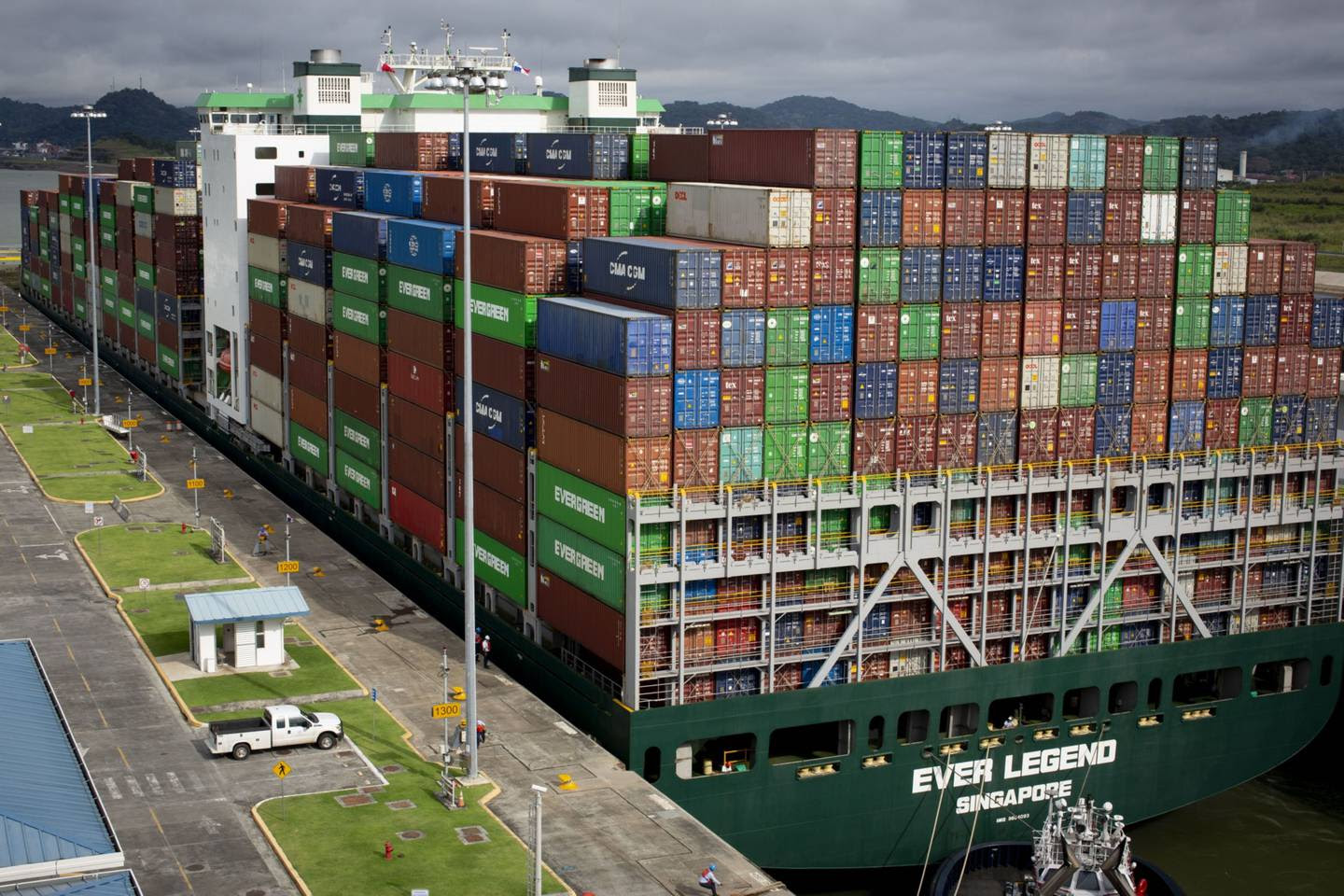By Laura Curtis, Ruth Liao, and Michael McDonald
The severe drought affecting the Panama Canal is forcing container ships to lighten their loads and pay higher rates, with further costs of transporting goods through the canal expected this northern summer.
Starting May 24, larger ships will have to reduce their draft (the depth at which they sit in the water) by carrying less cargo or reducing their weight, followed by another reduction that will take effect on May 29.
Some major ocean carriers have also announced new rates for goods shipped on the route as of June 1 in response to the canal restrictions.

The measures will likely result in delays and higher costs for goods shipped through the canal, through whose locks 5% of the world’s annual maritime trade typically passes.
The canal, which connects the Atlantic and Pacific oceans, has struggled with water supply shortages since a 2016 expansion that allowed much larger ships to pass through.
It has a protocol of transit fees and weight restrictions that enter into effect when drought conditions worsen.
Between February and April, it rained less than 50% of normal near the canal and the lakes that feed it.
That amount of rainfall is the same as in 2019, the lowest level in two decades, according to Everstream Analytics.
And there’s no sign of the rainy season that usually comes ahead of the Northern Hemisphere summer.
Water levels in Gatun Lake, the larger of the two lakes that feed the canal, are expected to reach record lows in July, restricting the draft of ships and cargo.

As of May 24, Neo-Panamax vessels – the largest ships transiting the waterway – will be allowed a draft of up to 44.5 feet (13.56 meters), down from the already restricted 45 feet, according to canal spokesman Octavio Colindres.
The draft limit will be lowered again to 44 feet on May 30.
Although this seems minor, it could translate into 40% less cargo on some container ships.
A draft of 50 feet is considered normal.
During the 2019 and 2016 droughts, the draft limit reached 43 feet.
At least four ocean carriers have announced weight limits or imposed container fees of between US$300 and US$500 per box as of June 1 in response to the canal measures.
More carriers are likely to follow suit as restrictions increase.
“Lower than usual water levels in Gatun Lake are causing severe draft restrictions on vessels transiting the Panama Canal,” shipping company Hapag-Lloyd said in a notice to customers issued on April 30.
The notice said shippers from East Asia to North America must pay a surcharge for all cargo from June 1.
Among Panama Canal Neo-Panamax users in April, containerships accounted for 45% of traffic, followed by liquefied petroleum gas, dry bulk, and liquefied natural gas carriers.
LNG carriers, which rely heavily on the canal, are not as affected by changes in the draft because they have fewer draft restrictions than those carrying heavier commodities or industrial products.
But any bottlenecks are cause for concern considering that expansions of US liquefied natural gas exports are set to kick in over the next five years.
The 44-foot draft restrictions will reduce space for most shippers on Neo-Panamax by 40%, according to Nathan Strang, director of ocean freight for Flexport Inc, a freight forwarder.
That means more ships will be needed to carry the same amount of cargo, which could increase vessel waiting times.
Strang said that some carriers would have to split heavier cargo into two containers instead of one, and ships carrying heavier goods will be hit harder.
He said these measures could cost importers and retailers using the route US$1,500 more per container.
“If you ship two containers a week of 12 tons each at about US$3.00 each, then you will have to ship three containers. So your price per shipment went from US$6,000 to US$9,000,” Strang said.
And shippers who normally move 25 tons per container now need three or four boxes.
“It’s a much bigger hit, and those shippers simply won’t use the channel,” he said.
Cargoes from Asia to the US can take alternative routes through the Suez Canal.
Or they can use Southern California ports, which would involve loading containers onto trucks or trains bound for Midwest and East Coast population centers.
Strang said some shippers are already considering those options.
“The pattern continues to feature below-normal precipitation across Panama for the foreseeable future,” said Jon Davis, chief meteorologist for Everstream Analytics.
“As a result, we expect lake levels to decline and worsen the impact on shipping through the canal.”
With information from Bloomberg
News Panama, English news Panama, Panama Canal

